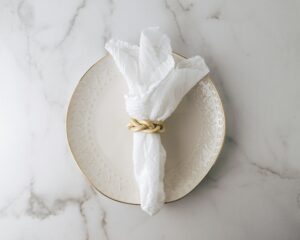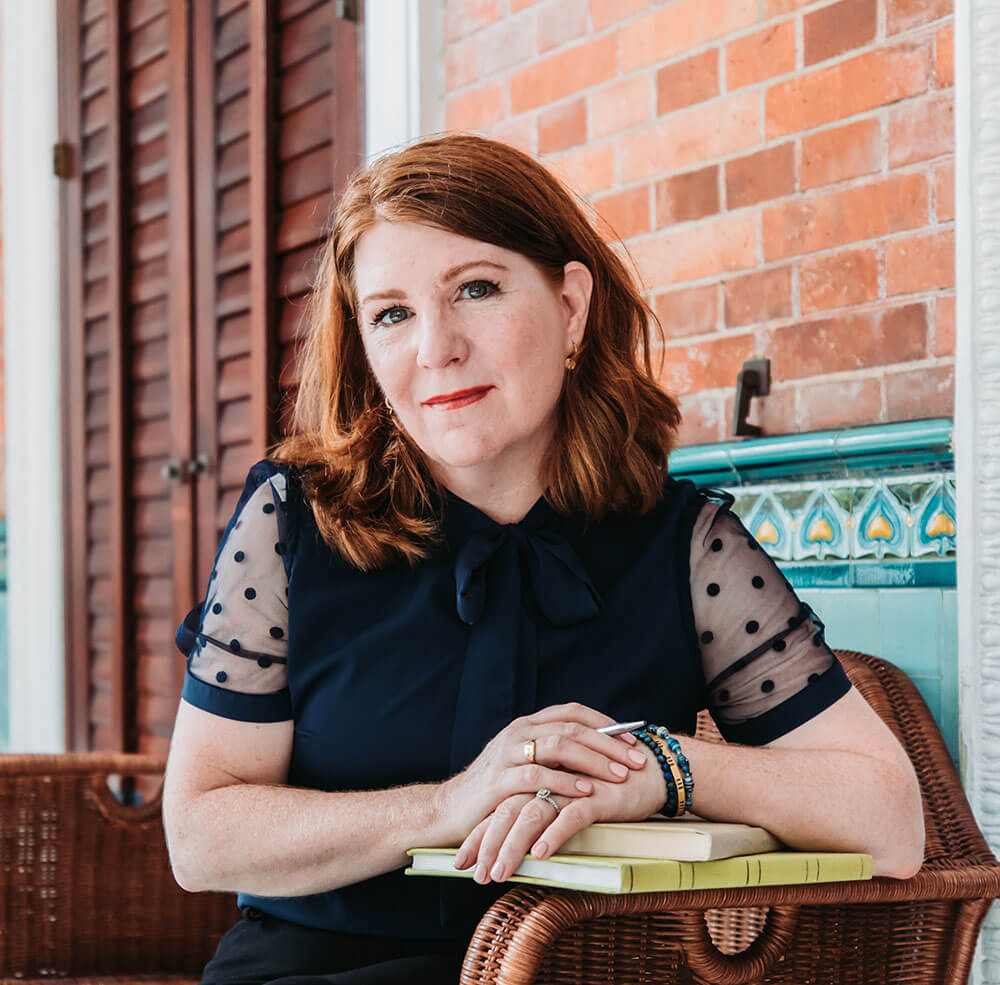 Napkins. I know. They seem so insignificant. But if you have ever wondered about the impact paper product use has on the environment, I have some news for you. The bad news is that, yes, using things like disposable paper napkins takes a pretty shocking environmental toll. But the good news is that making the switch from paper napkins to cloth napkins is surprisingly painless!
Napkins. I know. They seem so insignificant. But if you have ever wondered about the impact paper product use has on the environment, I have some news for you. The bad news is that, yes, using things like disposable paper napkins takes a pretty shocking environmental toll. But the good news is that making the switch from paper napkins to cloth napkins is surprisingly painless!
It may not seem like it would make much of an environmental impact to reduce the use of paper napkins, but you would be amazed.
Look at this crazy little statistic:
If half the U.S population uses 3 paper napkins per day, that’s 450,000,000 napkins in just the U.S. for ONE DAY. I started thinking about our family’s personal napkin usage when I was setting the table one evening and it just seemed like we were using a lot of them.
And I was right.
Doing the math, I calculated that our family went through about 15 napkins per day. Which is 5,000 paper napkins a year. Even if I didn’t include the plastic packaging and the environmental impact of transportation, using paper napkins seemed kinda like an excessive use of resources for wiping jam off our fingers, ya know?
How many trees does it take to make paper napkins?
One tree produces up to 28,000 napkins. Which means, for ONE DAY, it takes over 16,000 trees to provide paper napkins to half the U.S. population.
16,000 trees.
A day.
For napkins.
So, yeah, I feel like this is a switch worth making.
Honestly though, I’m still at the ‘low-hanging fruit’ stage of making sustainable, environmentally friendly changes. Meaning, I can’t see myself composting (yet? ever?). But I am increasingly aware of how much stuff I consume and how much waste I generate.
 So, how much was NOT using paper napkins going to hurt? Haha.
So, how much was NOT using paper napkins going to hurt? Haha.
No, but really.
Now, after years of using cloth napkins, I can tell you that it actually wasn’t hard.
Turns out—switching from paper napkins to cloth napkins is surprisingly easy!
As with any change, do what will work for you. You know your family and your habits. Don’t create extra barriers for yourself to switch from paper napkins to cloth napkins. Think what might make you crazy about this and see if you can mitigate the things that might prevent you from easily swapping to cloth napkins.
Here are 4 things I learned when I made the switch from paper napkins to cloth napkins:
-
It’s best to use darker colors for cloth napkins
I had some fancy cloth napkins I used for occasions like Thanksgiving, but they were, you know, fancy. Cream-colored. You might have some of these, too. The kind that get pushed to the back of the linen closet and rarely get used.
I just couldn’t inflict my children’s greasy, stained fingers onto the pretty napkins.
I’m not saying go straight to black, but a nice charcoal gray hides a multitude of things, ya know?
-
Pick cloth napkins made of sturdy, easy to clean fabric.
Something like linen or cotton. Nothing fancy.
I’ve seen people get inexpensive bandanas (super cheap at craft stores), which are festive and fun. But I like a bit more thickness, so I opted to find thicker ones at Target. I just saw these great ones on Amazon, too.
If you are a crafty person, there are lots of simple DIY instructions on Pinterest to make your own cloth napkins. You can buy fabric or use old towels or other existing cloth to turn into napkins. Look at you–recycling AND reducing!
-
Throw cloth napkins in the wash with your regular laundry
The whole point of this paper to cloth swap is to decrease my environmental impact. But I worried I’d be doing a special load of laundry just for the cloth napkins. How did that help the environment, exactly?
Turns out, you can just throw them in the wash with whatever else you are washing. This works for me because the darker cloth hides most stains and I don’t obsess about the stains. It’s easy to just throw them in with a load of darks or towels.
Note: I don’t stain treat or iron them or anything special. I just wash the cloth napkins, hang them up to dry and then fold them and put them in a drawer in the dining room.
If stained cloth napkins are likely to make you crazy, get white ones you can easily throw into the wash with other whites you stain treat or bleach.
Wash as needed
Unless you feel like you really need to wash a cloth napkin after one use, they can usually go days before you wash them. After BBQ, all of ours go in the wash. But regular, daily use doesn’t make them very grubby, so we have attained a level of comfort with re-using ours for several meals.
We don’t have a specific day we wash them, but a system might be helpful for some families. Everyone in our family just tosses their napkin into the wash when then need to and gets a fresh one from the drawer for the next meal.
We have about 12 cloth napkins. Enough to swap them all out at once (like BBQ night) and a few extras for regular guests (like Sunshine’s boyfriend). If we have a large group of people over, I do resort to paper napkins. At least for now.

-
Use napkin rings to distinguish who’s cloth napkin is whose
Since we aren’t starting with a fresh cloth napkin for each person at every meal, we use napkin rings to keep them separate. I had some from my grandmother, and we’ve picked up a few over the years. The point is that each person in the household has their own specific napkin ring. At the end of the meal, the person puts their napkin back in the their ring and it goes back in the drawer.
It’s super easy to make your own cloth napkin holders. Check out this DIY tutorial on how to make napkin rings.
Or, everyone in your family gets their own color or pattern for their cloth napkins. Whatever works!
As I become more aware of green living and sustainable efforts in my own life, I’ve started to notice easy places to make a change. It’s pretty easy to make the switch from paper napkins to cloth napkins.
And each small change we can each make definitely makes a difference.





